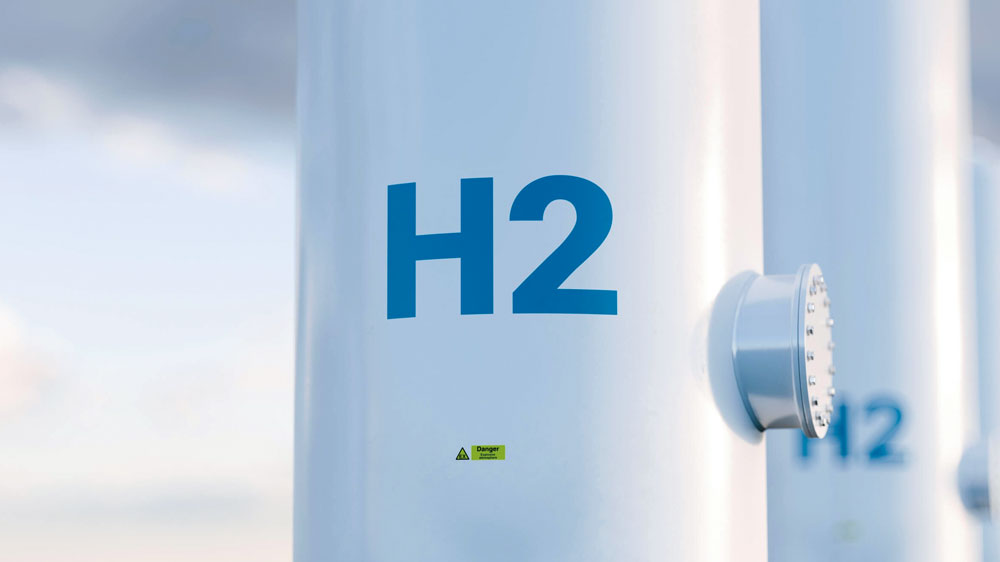Hydrogen: Is This the Future? – part one
While cataclysmic events in the energy sector are unfolding, the status quo and its king, oil, are being challenged by emerging contesters. Hydrogen has proven to be one of the prime challengers as it seems that it will be playing a very important role in the future. This consensus has been embraced by international energy organizations like IEA (International Energy Agency) and IRENA (International Renewable Energy Agency) and powerful new dynamics are being formed as these words are being typed. Hydrogen seems to offer a unique combination of practicality, scalability and cost effectiveness, providing an answer to the very complicated question of decarbonization. It presents many challenges too.
The really heavy domains of heavy industry, like manufacturing industry and heavy-duty, long-haul transport, are presenting the biggest challenges regarding the transition towards decarbonization; solar and wind cannot make it by themselves. Bio-gas could potentially help, but faces severe volume limitations and processing complications. One of the few very promising solutions seems to be clean hydrogen, produced from renewable or nuclear power or fossil fuels with carbon capture and storage (CCS).
In this article, broken down in two parts, we are going to examine the momentum and some of the most convincing arguments for Hydrogen and how it could fuel our future.
Momentum
Following the Paris climate agreement, and not only, leading economies throughout the globe are spearheading the initiatives for cleaner fuel. Europe seems to be taking the lead on this. For example, lowered emission standards for vehicles are increasingly popular in many cities and countries. They are a powerful driver of clean hydrogen applications in transport, where diesel and petrol are rapidly becoming less acceptable. Many current discussions in Europe also involve proposals such as an obligation to blend clean gas and more specifically hydrogen, into the gas grids. This would help the clean hydrogen market in Europe get off the ground really fast.
The unified market is one of Europe’s greatest achievements and provides European businesses with a large domestic market with free trade and minimal restrictions. It stimulates competition and trade within the EU and provides EU citizens with a wider choice of goods and services. On top of that, it offers more employment and entrepreneurial opportunities across all domains and sectors. It gives companies the leverage they need to become leaders on the global stage. Nevertheless, Europeans continue to experience some barriers that prevent them from fully reaching the potential of their international domestic. Estimates show that removing these barriers could bring up to EUR 713 billion by the end of the decade. Reports on barriers to the single market identify a broad range of obstacles in the single market taking the perspective of Europe’s businesses and consumers. These obstacles mainly have to do with obsolete and archaic national legislative frameworks of some of the EU members that impede progress.
The wide arsenal of initiatives indicates Europe’s will to embrace a new approach for its Energy policy, setting the example for the rest of the world. It sets out a range of actions to support all sorts of European stakeholders like corporations of every size (including start-ups), research centres, service providers, suppliers and social partners. Targeted policies for small and medium-sized enterprises (SMEs) aim to reduce obstacles and help Europe’s numerous SMEs to do business across the single market and beyond, access financing and help lead the way on the digital and green transitions.
SMEs play a key role in Europe’s industrial fabric and are central to the success of this new industrial approach. The Strategy aims to help SMEs to lead the twin transitions, which also means securing access to the right skills. To build SMEs’ capacity for these transitions, the Commission will upgrade the European Enterprise Network with dedicated Sustainability Advisors. It will also expand with Digital Innovation Hubs across Europe to empower SMEs to integrate digital innovative solutions.
The President of the European Commission, Ursula von der Leyen, stated: “Europe’s industry is the motor of growth and prosperity in Europe. And it is at its best when it draws on what makes it strong: its people and their ideas, talents, diversity and entrepreneurial spirit. This is more important than ever as Europe embarks on its ambitious green and digital transitions in a more unsettled and unpredictable world. Europe’s industry has everything it takes to lead the way and we will do everything we can to support it.” Thierry Breton, Commissioner for Internal Market, said: “Europe has the strongest industry in the world. Our companies – big and small – provide us with jobs, prosperity and strategic autonomy. Managing the green and digital transitions and avoiding external dependencies in a new geopolitical context requires radical change – and it needs to start now.”
To make it easier for SMEs to operate in the single market and beyond, the Commission proposes actions to remove regulatory and practical obstacles to doing business or scaling up. Among them, the Commission is pursuing to ensure prompt payment, in particular through the new virtual Observatory. To make it easier for SMEs to go public in Europe, the Commission will also support an SME Initial Public Offerings (IPOs) Fund under the InvestEU SME window; this will be a big gamechanger. The ultimate objective is to make Europe one of the best places to start businesses and scale up. It will work with Member States on an EU Start-up Nations Standard to share and adopt best practices to accelerate growth of high-tech SMEs and start-ups. To ensure political commitment for these measures, a high-level EU SME Envoy will guarantee close partnership and coordination with EU Member States through national SME envoys, as well as with regional and local authorities. It will also strengthen the SME perspective in EU legislation.
To maintain and boost Europe’s industrial leadership, a new Industrial Strategy will help deliver impact on three key domains:
- Maintaining European industry’s global competitiveness;
- Making Europe climate-neutral by 2050;
- Shaping Europe’s digital future.
In addition to a comprehensive set of actions, both horizontal and for specific technologies, the Commission will analyse the risks and needs of the different industrial ecosystems. In doing this analysis, the Commission will be working closely with the Industrial Forum, to be set up by September 2020. It will consist of representatives from industry, including SMEs, big companies, start-ups, social partners, researchers, as well as Member States and EU institutions. Industry does evidently play an essential role in supporting Europe’s economic growth and prosperity. European industry is a global leader in many sectors representing up to 20% of the total value added of the EU and generating 35 million jobs.
Many European states have already showed tremendous progress launching impactful initiatives.
The Dutch government has announced the broadening of its low-carbon program by pushing its subsidies to turn to renewable energy. This will help the market-driven activation of blue hydrogen projects and, depending on how costs evolve, hopefully that of green hydrogen projects in the near future.
France’s hydrogen strategy includes ambitious targets for ‘cleaning’ the current use of grey hydrogen in industry, the soonest possible. They target 10% green hydrogen use in industry for 2022 and 20% to 40% for 2027.
Germany has been pursuing a very ambitious paradigm shift to an energy system based on renewables – known as the Energiewende – with increased determination since the turn of the century. While in the earlier years the focus was on increasing renewable energy production, recently, the German debate has started to also revolve around the long-term role of hydrogen. Additionally, a proposal from important industry players in the country, like Siemens, aims to organize combined auctions of offshore wind fields for electrolysis, which would imply connecting the value chain in one single bundle.
The government of Romania is set to support the research activity in the field of hydrogen as alternative energy source. Romania has a Memorandum on the establishment of the Romanian HUB for Hydrogen and New Energy Technologies, ROHYDROHUB. The Sustainable Development Department on May 26 organized the event RO-HYDROHUB, hydrogen as an alternative energy vector. “The research activity in the field of hydrogen, as alternative energy source, is of particular importance and, together with the National Institute for Cryogenic and Isotopic Technologies we initiated two actions, so as to amend the Competitiveness Operational Programme and develop the first project applied on this segment – Technological solution of thermal energy supply for rural communities based on hydrogen,” Minister of European Funds Marcel Bolos announced. Financing this project could be achieved under the Operational Programme ‘Sustainable Development’.
Meanwhile, on the other side of the world, the recent launch of the first liquefied hydrogen carrier vessel in Japan is a historic event that captured headlines in the media Japan’s plans for a ‘hydrogen-based society’ were first introduced in the 4th Strategic Energy Plan of 2014 and further developed in the Strategic Roadmap for Hydrogen and Fuel Cells of 2016. With the Basic Hydrogen Strategy of 2017, Japan was pretty much the first country in the world to release a strategic government plan for hydrogen and fuel cell technology. Just like the first LNG tanker 50 years ago, it may mark the beginning of a new era. And, it is again Japan that leads the way in establishing the first international trade routes for shipping clean hydrogen from Australia and Brunei to Japan.
Hydrogen as fuel
In the modern energy world, the word hydrogen is becoming more and more popular. Hydrogen is a complex word deriving from the name hydro-gène (‘water producer’) and was used from 1787 by the French chemist Antoine Laurent de Lavoisier, from the Greek words ‘hydor’ (water) and ‘genes’ (producing Hydrogen – chemical symbol H for the Latin name hydrogenium). Earlier it had been called ‘inflammable air’ by the English chemist and physicist Henry Cavendish because of its high flammability. The German name ‘Wasserstoff’ (‘water substance’) likewise refers to its water producing properties. Hydrogen has the lowest atomic weight of any element, at 1.008 grams per mol (g/mol); atomic hydrogen is 12 times lighter than carbon (C), 14 times lighter than nitrogen (N) and 16 times lighter than oxygen (O).
Space is also full with highly diluted hydrogen and contains enormous gas clouds consisting of hydrogen. Our sun, which is around 4.6 billion years old, is a so-called main sequence star, which releases its radiant energy from hydrogen burning. Hydrogen is also the most frequently occurring chemical element on the giant gas planets (Jupiter, Saturn) of our solar system. Unlike in outer space, the proportion of hydrogen in the elements on Earth is much smaller. The part of the Earth that is accessible to humans makes up less than 1% of the Earth’s mass. In the region of the Earth’s crust, oceans and atmosphere, the mass fraction of hydrogen is just 0.9% (Mortimer/Müller 2010). The proportion of hydrogen in the Earth’s atmosphere is only 0.5 parts per million (ppm).
Moreover, hydrogen occurs in almost all organic compounds. Organic compounds cannot be found only in living creatures. Fossil energy sources also consist primarily of carbon-hydrogen compounds. A very good example is the hydrocarbon methane, the main constituent of natural gas, is made up of one carbon atom and four hydrogen atoms (CH4). By contrast, in higher alkanes such as petrol and diesel fuel the carbon-hydrogen ratio is around 1:2, and in coal it is only around 1:1. The higher the hydrogen content of a hydrocarbon, the lower the carbon dioxide content and hence the lower the greenhouse gas emissions on combustion (oxidation). In the 1960s, the successful use of hydrogen as a rocket propellant and of fuel cells to operate auxiliary power units in space – especially in the context of the US Saturn/Apollo space travel programme – provided further hype to the fantasies surrounding hydrogen. Also, in the 1960s there were the first passenger cars were fitted with fuel cells technology as prototypes. Hydrogen has long been regarded as an energy carrier of the future. It is also discussed as the foundation of a sustainable hydrogen economy.
Properties
The most characteristic chemical property of hydrogen is its flammability (Hollemann/Wiberg 2007). When hydrogen is burned in ambient air, the flame is barely visible in daylight, since the flame is characterized by low heat radiation and a high ultraviolet component. In comparison with other fuels, it is striking that hydrogen is combustible in a very broad concentration spectrum. The ignition range of hydrogen, marked by its lower and upper explosive limit, is correspondingly large: the lower limit is at a concentration of 4 vol%, the upper limit at 77 vol%.
Its combustion properties make hydrogen an interesting combustion fuel. If hydrogen were to be used in internal combustion engines, the broad ignition limits would allow for extremely lean air/hydrogen gas mixtures. Lean combustion is more efficient than stoichiometric combustion and thus minimizes fuel consumption. Due to its flammability, when working with hydrogen, an oxyhydrogen gas sample should always be taken or oxygen should only be added to the hydrogen at the moment of ignition (Hollemann/Wiberg 2007). Similar to gas mixtures containing hydrogen and chlorine gas or fluorine, the reaction to hydrogen chloride or hydrogen fluoride can result in explosive exothermic reactions. Its chemical properties make hydrogen an excellent combustion and automotive fuel. Nevertheless, handling hydrogen requires care, and in particular compliance with safety regulations.
The fuel cells
Whereas the 19th Century was the century of the steam engine and the 20th Century was the century of the internal combustion engine, it is likely that the 21st Century will be the century of the fuel cell. Fuel cells are now on the verge of being introduced commercially, revolutionizing the way we produce power. Fuel cells can use hydrogen as a fuel, offering the prospect of supplying the world with clean, sustainable electrical power. We should clarify now that hydrogen is not a primary energy source like coal and gas. It is an energy carrier. A fuel cell by definition is an electrical cell, which unlike storage cells can be continuously fed with a fuel so that the electrical power output is sustained indefinitely (Connihan, 1981). They convert hydrogen, or hydrogen-containing fuels, directly into electrical energy plus heat through the electrochemical reaction of hydrogen and oxygen into water. The process is that of electrolysis in reverse.
Overall reaction: 2 H2(gas) + O2(gas) → 2 H2O + energy
Because hydrogen and oxygen gases are electrochemically converted into water, fuel cells have many advantages over heat engines. These include high efficiency, virtually silent operation and, if hydrogen is the fuel, there are no pollutant emissions. If the hydrogen is produced from renewable energy sources, then the electrical power produced can be truly sustainable. The two principle reactions in the burning of any hydrocarbon fuel are the formation of water and carbon dioxide. As the hydrogen content in a fuel increases, the formation of water becomes more significant, resulting in proportionally lower emissions of carbon.
For energy applications, fuel cells have become the main focus of hydrogen usage. Fuel cells offer much higher electrical efficiency and overall efficiency than heat engines. The many different cell types now available are distinguished in terms of the electrolytes (ionic conductors) they use and their operating temperature. Low temperature cells allow for a dynamic load response, while high temperature cells favour continuous loads and are more resilient to fluctuations in fuel quality. In addition, after external or internal reforming, some fuel cell types can also use other fuels containing hydrogen (such as natural gas or methanol).
“The fuel cell makes sense when the energy storage required by an application represents many hours of operation at full power. The durability of batteries in this sort of application is at best a few hours. The size, weight, and cost of energy storage for a fuel cell powerplant easily out competes batteries. You do have the fixed cost (and size and weight) of the plant, which is a function of power. This is why it is important to note that the advantage of fuel cells is for low power, high energy applications” (Ric Pow of Pow Consulting, 2001).
Rechargeable batteries will discharge over time; the colder the ambient temperature the quicker they will discharge. Also, the charge capacity of a rechargeable battery decreases with the number of times of charge and discharge. Conversely, providing the hydrogen supply is sealed correctly, a fuel cell will not discharge over time, maintaining its full charge capacity almost indefinitely.
On the next part of the article, we are going to be addressing the applications, distribution challenges and the future of Hydrogen.
>>> Hydrogen: Is this the future? (Part II)
Co-author: Konstantinos Michalopoulos, Dipl. Mining & Metallurgical Engineer at National Technical University of Athens







